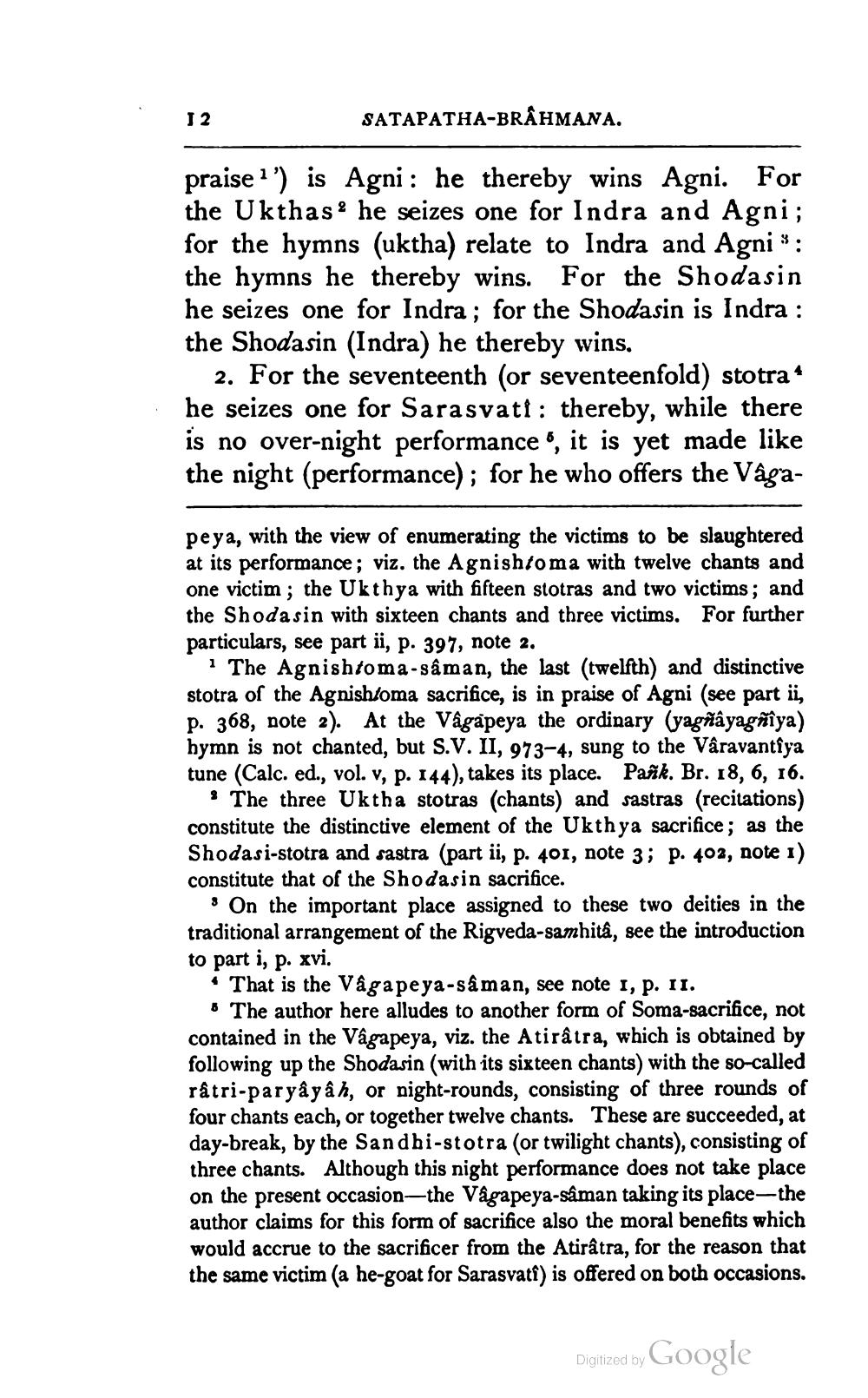________________
12
SATAPATHA-BRÂHMANA.
praise ? ') is Agni: he thereby wins Agni. For the Ukthas? he seizes one for Indra and Agni; for the hymns (uktha) relate to Indra and Agni : the hymns he thereby wins. For the Shodasin he seizes one for Indra ; for the Shodasin is Indra : the Shodasin (Indra) he thereby wins.
2. For the seventeenth (or seventeenfold) stotra * he seizes one for Sarasvati: thereby, while there is no over-night performance ", it is yet made like the night (performance); for he who offers the Vaga
peya, with the view of enumerating the victims to be slaughtered at its performance; viz. the Agnishtoma with twelve chants and one victim ; the Ukthya with fifteen stotras and two victims; and the Shoda sin with sixteen chants and three victims. For further particulars, see part ii, p. 397, note 2.
The Agnishtoma-saman, the last (twelfth) and distinctive stotra of the Agnishtoma sacrifice, is in praise of Agni (see part ii, p. 368, note 2). At the Vagapeya the ordinary (yagñayagñîya) hymn is not chanted, but S.V. II, 973-4, sung to the Vâravantiya tune (Calc. ed., vol. v, p. 144), takes its place. Pañk. Br. 18, 6, 16.
The three Uktha stotras (chants) and sastras (recitations) constitute the distinctive element of the Ukthya sacrifice; as the Shodasi-stotra and sastra (part ii, p. 401, note 3; p. 402, note 1) constitute that of the Shodasin sacrifice.
3 On the important place assigned to these two deities in the traditional arrangement of the Rigveda-samhita, see the introduction to part i, p. xvi.
• That is the Vågapeya-saman, see note 1, p. II.
• The author here alludes to another form of Soma-sacrifice, not contained in the Vâgapeya, viz. the Atirâtra, which is obtained by following up the Shodasin (with its sixteen chants) with the so-called râtri-paryâyâh, or night-rounds, consisting of three rounds of four chants each, or together twelve chants. These are succeeded, at day-break, by the Sandhi-stotra (or twilight chants), consisting of three chants. Although this night performance does not take place on the present occasion—the Vågapeya-saman taking its place-the author claims for this form of sacrifice also the moral benefits which would accrue to the sacrificer from the Atirâtra, for the reason that the same victim (a he-goat for Sarasvati) is offered on both occasions.
Digitized by Google




